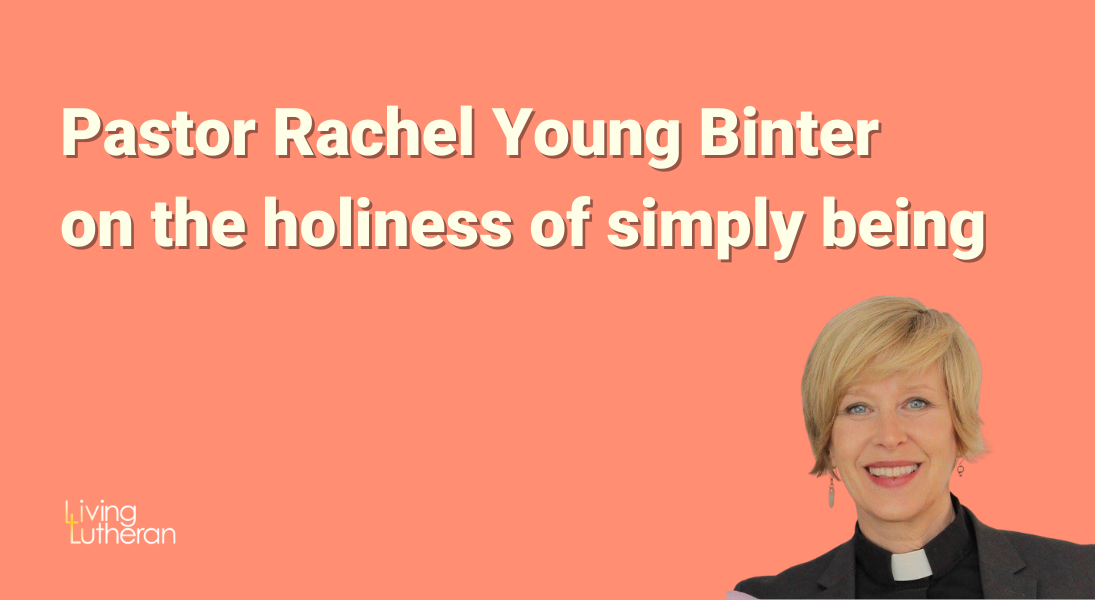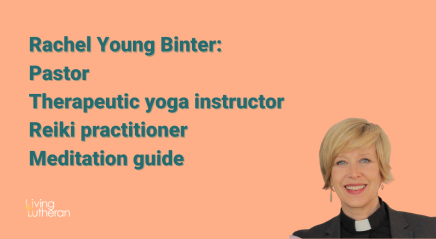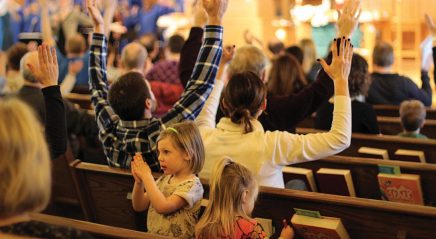In part one of this interview, Living Lutheran spoke with Rachel Young Binter about how embodied spiritual practices inform her work as pastor of the Corner House, the Lutheran campus ministry of the University of Wisconsin–Milwaukee. This second part focuses on the specifics of those practices, resources she recommends and a meditation she offered our readers.
Living Lutheran: Could you tell us more about the connection between Lutheranism and the embodied spiritual practices you lead, such as yoga?
Young Binter: I was certified to teach therapeutic yoga during the pandemic and offer it once a week. Yoga is rooted in Hindu philosophy and spiritual practices, and I try to honor that and not collapse it into a Christian practice—but, that being said, there are connections that can be made between the traditions.
Christians also have a history of meditation and chant. We have a tradition of using the breath, particularly in singing, to inhale and exhale together, which scientists now know has the effect of synchronizing brain activity between people, creating a sense of unity and peace.
We also press the palms of our hands together to still our bodies to be in prayer and access the divine. We kneel to surrender and experience humility. We stretch our arms wide and face our palms up as we pray to receive what God has to give us or send love to others. So, we know, as the ancient Hindu people knew, that shared movement and breath, silence and motion, creates sacred space within and around us.
At the end of my yoga classes, when my students are lying in the fetal position on their sides for one last rest before they return to a seated position, I always remind them that, for just a minute more, they don’t have to do anything; that their holiness is in their just being, and I see them receive that truth with longing. To me, what they are feeling out in their bodies at that moment is the good Lutheran baptismal theology that they are saved by grace alone.
In the world in which they live, where so much of their value is tied to their production, this is a much-needed reminder each week, and they always rise up to meet me with faces that are relaxed and restored and glowing with peace.
How does your Reiki training engage with your ministry?
Early in my time in campus ministry, I also participated in several workshop days to learn about Reiki and receive attunements from a Reiki master. I am a level-two practitioner. Reiki comes from Japan and [originated in Buddhism]. It sensitizes people to the flow of energy that happens within and between human beings—which, as a Christian, I would understand as Spirit—and helps them learn to use that flow to help bring about healing.
It is available to everyone, and I have known people who are highly attuned without having ever been in a Reiki training. I simply describe it as the laying-on of hands and prayer, since this is mostly how it enters my practice as a pastor. When I pray for people in worship during a healing service or individually in a pastoral care setting, I will ask if I can lay my hands on their head, and I will try to be intentional in allowing them to more physically feel the love of God pouring into them as I pray.
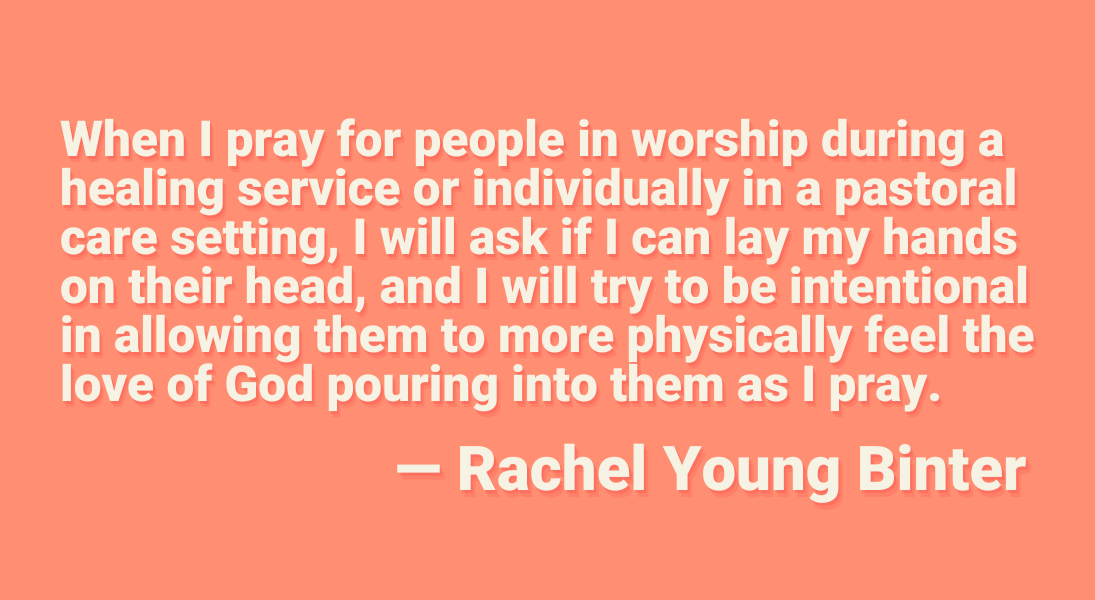
I also use it at the end of yoga for those who would like me to gently hold their head in my hands as they lay on their backs and send a deep blessing to where it is needed most. I almost always feel the palms of my hands activated as I extend them in prayers at communion and other times in worship. I, honestly, am not sure how it works, but I do know that people who receive this kind of laying-on of hands and prayer are almost always comforted and moved by it. There are hospitals [that] are now training chaplains who would like to use it with patients in that setting as well.
How do you help others find God and spiritual grounding in these practices?
The body is the ground of the sacred, so taking time to put down our distractions and open ourselves to feel what is stirring in us is a divine and biblical practice.
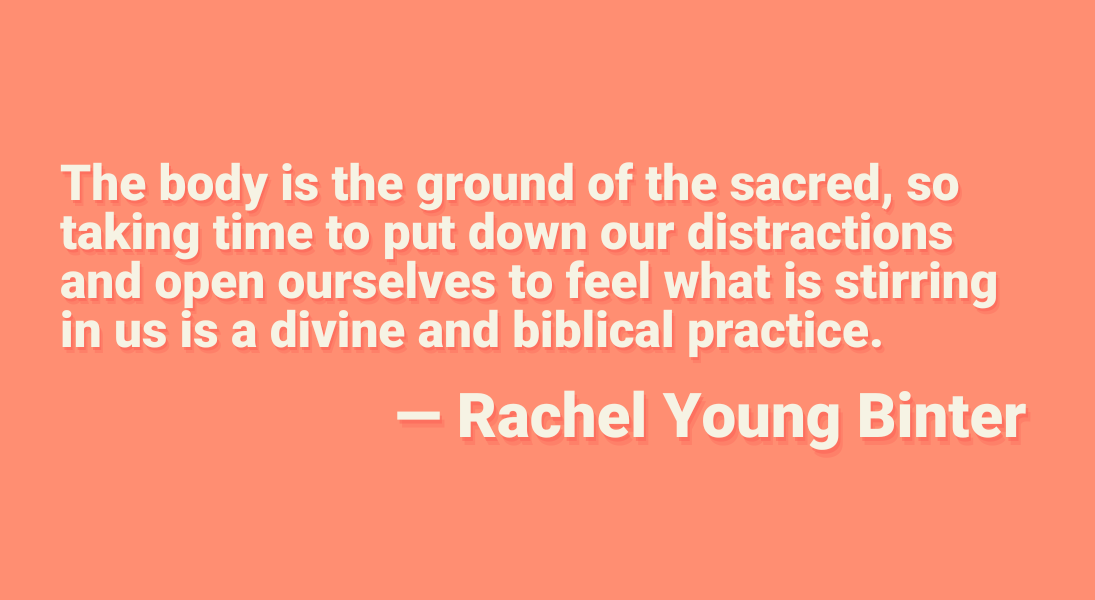
For those interested in exploring other ways to connect with the divine “in the all of it,” as you said, what resources would you recommend?
One of my favorite spiritual readings of the past year is This Here Flesh by Cole Arthur Riley (Convergent, 2022). My book is full of highlighted texts. You can also find her writing at Black Liturgies on Instagram. I am also a huge fan of the artwork and blessings written by Jan Richardson online at The Painted Prayerbook as well as her books In the Sanctuary of Women (APG, 2010) and Circle of Grace (Wanton Gospeller, 2015).
I think to understand Scripture, you need to read poetry, and I have a very worn copy of a collection of women’s poetry called Cries of the Sacred that introduced me to many of the poets I love.
You’ve prepared a simple meditation for Living Lutheran readers. Could you share it with us?
Take a moment to find a quiet place where you can be seated in a chair, with your hands resting gently in your lap. When you are seated, feel your feet on the ground and allow them to become connected to the earth. Notice the base of your body being held by the seat of the chair as a secure and holy resting place.
Inhale, creating a lengthening in the spine from your base on the chair to the crown of your head. As you exhale, release any heaviness in the body, let your shoulders relax down and feel a slight opening in your heart space. In this more expansive posture, begin to notice the natural flow of your breath.
Let the breath be the very breath of God moving within you: filling and releasing, nourishing life within you, grounding you in love. Stay with this sensation and read the following verse, John 14:20, slowly three times, deeply inhaling and exhaling after each reading:

Jesus said, “On that day you will know that I am in God, and you are in me, and I am in you.”
Inhale, exhale.
Jesus said, “On that day you will know that I am in God, and you are in me, and I am in you.”
Inhale, exhale.
Jesus said, “On that day you will know that I am in God, and you are in me, and I am in you.”
Inhale, exhale.
Let this promise resonate inside of you and see if something rises up: a sensation, a feeling, a longing. Even if there aren’t words for it yet, invite God to meet you in the deep knowing of the body. Give thanks for God who has been present and loving you within every breath of every day of your life.
Place your hands on your heart and close with the following words:
Lord, you are resting in me.
May I rest in you. Amen.


